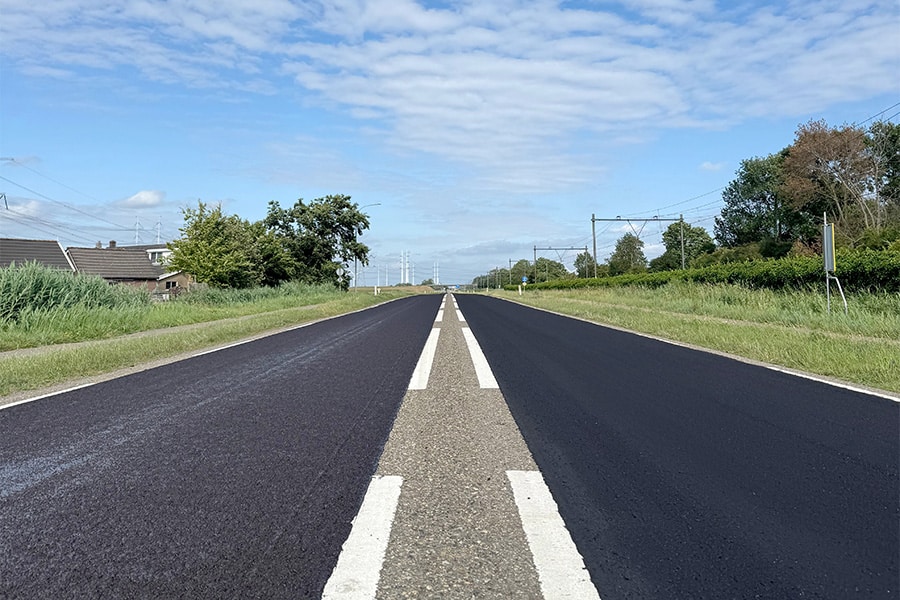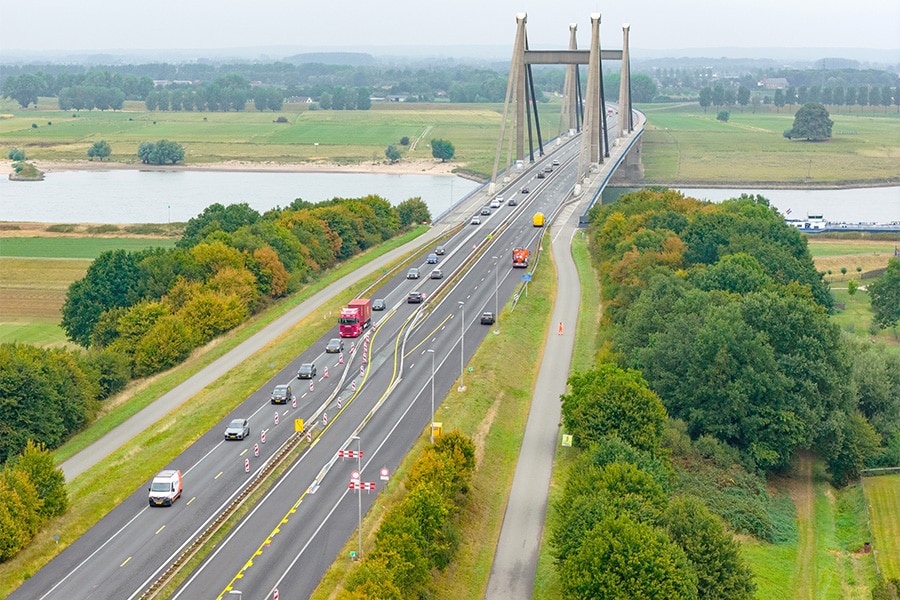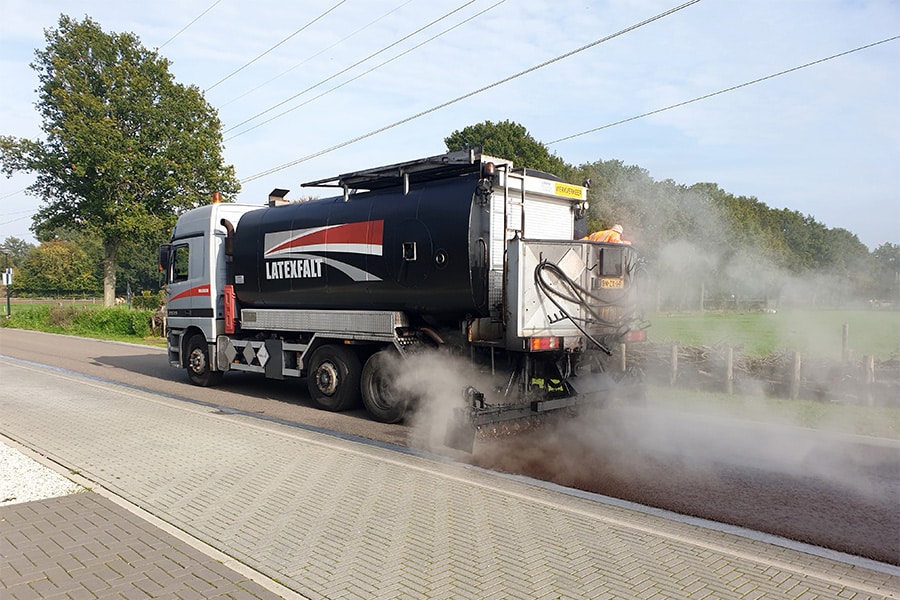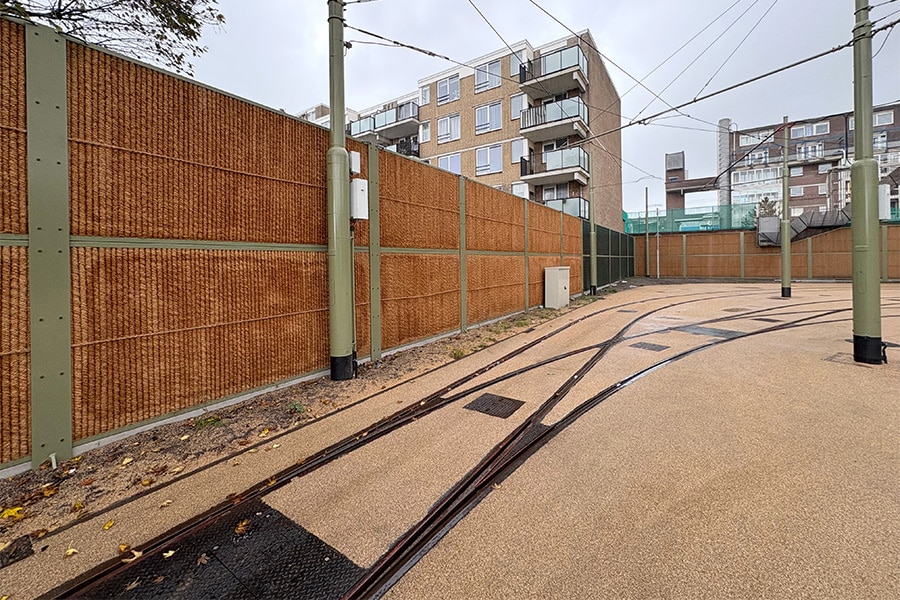
Interreg V project Rolling Solar launched
A regional consortium of more than 20 knowledge institutions, road operators and companies has kicked off the European collaborative project "Rolling Solar." With a budget of 5.7 million euros, the consortium will enable the integration of thin film solar cells into infrastructure. The goal? To integrate thin film solar cells on a large scale in freeways and bicycle paths, as well as in crash barriers and noise barriers.
The Rolling Solar project, which lasts 3 years, is being carried out within the framework of the Interreg V Euregio Meuse-Rhine cooperation program. There is financial support from the European Regional Development Fund, the provinces of North Brabant, Flemish Brabant, Flemish-Limburg and Liège and the Dutch Ministry of Economic Affairs.
Without additional land use
Rolling Solar is carried out by Solliance, the public-private partnership of companies and knowledge institutions in the Netherlands, Belgium and Germany that focuses on the development of thin-film solar cells. In addition to project coordinator TNO, the participating knowledge institutions within Rolling Solar include imec, Hasselt University, Forschungszentrum Jülich, RWTH Aachen, Zuyd University and Centre de Recherche des Instituts Groupés (CRIG) de la Haute Ecole Libre Mosane (HELMo).
The goal of the knowledge institutions is to get manufacturers and building and construction companies to technically and cost-effectively integrate flexible solar cells into public infrastructure. The intended result is to facilitate large-scale sustainable electricity production close to the user and without additional land use.
Practical trials
Because the infrastructure space for solar power generation is huge. Belgium, Germany and the Netherlands are connected by a road network some 1 million kilometers in length. These roads, together with street furniture - such as crash barriers and noise barriers - offer enormous potential for solar power generation. The advance of the electric car and intelligent traffic systems also offers the possibility of using the decentrally generated solar energy locally.
'The examples demonstrated to date of solar energy in infrastructure - such as the integration of crystalline silicon solar cells in bicycle paths - are still relatively expensive,' states Peter Toonssen, program manager at Solliance. 'Not only because of the low production volumes, but especially because of the materials that have to be used to protect these types of solar cells. Within Rolling Solar, we are going to reduce those costs by using thin film solar cells that are not only flexible, but also less vulnerable. As part of the project, several field trials will be conducted to present viable business concepts for thin film solar cells in infrastructure in 3 years.'
35,000 kilometers
Toonssen points out that thin film solar cells can be produced on flexible materials up to several hundred meters long. Moreover, industrial companies and clusters are present in the Meuse-Rhine Euregio that can make the solar cells suitable for roll-to-roll production, allowing the solar cells to actually be installed from rolls.
The potential for marketing the products, as mentioned, is great. Toonssen: "For example, integrating solar cells into the entire Dutch bicycle network - approximately 35,000 kilometers in size - would enable an annual solar power production of 15 terawatt hours. This amounts to a CO2-reduction of 500 million tons per year.'
Societal challenges
Bert Pauli, Provincial Executive member for Economy and Internationalization of the province of North Brabant, is pleased with the international nature of the Rolling Solar project: 'As a provincial government, we have an important role to play in making this type of innovation project financially possible. For the Meuse-Rhine Euroregion to which North Brabant belongs, it is increasingly important to cooperate across provincial and national borders in scaling up the energy transition. The Rolling Solar consortium is an excellent example of this, demonstrating how the energy transition not only manages to mobilize owners of houses and buildings for the production of sustainable energy, but also convinces infrastructure managers to switch to large-scale energy production. This European innovation project is thus a response to the major social challenges we face as a society. Moreover, the industry present in this region can create a multiplier effect by not only making an important contribution to the energy transition, but also generating regional employment.'




